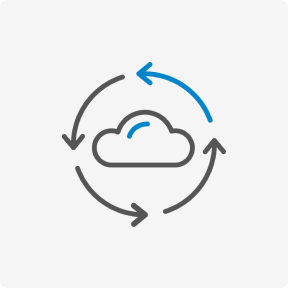Discuss with your table mates, as an overall group, and capture learnings and takeaways to bring back to your own team. For McGraw Hill, having a transparent framework that drives smart investment strategies and a common language across this 135-year-old company is critical. Known as one of the “big three” education publishers, McGraw Hill must stay ahead of their competitors with innovation and value delivery. Join Yuliya Oberman, Finance Director for McGraw Hill Education and Eileen Wade, General Manager of the TBM Council as they discuss how TBM is essential to McGraw Hill’s enterprise resource strategies and digital transformation journey.

Cost is regularly reviewed and trended, therefore cost transparency can influence employees to notice services and software that isn’t beneficial. IT cost transparency is an IT management software and system that enables organizations to model and track the total cost to deliver and maintain the IT services. IT cost transparency solutions provide complete budgeting and financial overview of the organization.
Attractive Strategy, But Limited Evidence of Efficacy
But the retailer made a fortuitous error, including the costs infographic for only three of the colors—burgundy, black, and gray. «By unpacking the costs, you have the opportunity to explain everything you did for the customer in putting that product or service together,» says Bhavya Mohan, a Harvard Business School doctoral student in marketing. «When firms communicate the effort that went into making a good, consumers tend to value the product more.»

In economics, a market’s transparency is determined by how much is known about its products and services and the capital assets that are available, as well as the pricing structure, and where they can be found. The degree to which that market is free and how efficient it is can be determined by its transparency. For example, Everlane (), is a San Francisco-based online retailer that reveals the variable costs of production for each of its products, as well as images and descriptions of the factories where products are made. And Honest By (), a Belgian retailer, augments cost transparency on its website with detailed supply chain information for each component of each garment, right down to the hang tag. «This was a novel thing to do, and the advantage is probably greatest when it’s perceived as novel,» John says.
Price Transparency and Costs
Competitive intelligence on pricing and accessibility of services, as well as insights into internal costs, can help healthcare organizations understand which shoppable services are the best to offer in their geographic region. Technology can play an important role in helping consumers understand their out-of-pocket costs and schedule the right bundle of services as advised by their physicians, so they get the care they want at the location of their choosing. In addition, tools such as price schedules and healthcare cost estimators can ensure healthcare providers and patients have access to the same pricing information as they partner in navigating the healthcare system. The role of technology in helping realize the full promise of price transparency in healthcare cannot be understated.
Patients and consumers are now especially disadvantaged when it comes to the lack of transparency around the price and cost of healthcare products and services. Shielded in the past by comprehensive public or private insurance coverage, consumers are faced with substantial increases in cost sharing. Significant increases in bankruptcy related to healthcare costs for insured middle-class Americans indicate how perilous this transition has become. As costs increase, market proponents should insist that consumers have access to comparative information, the price and cost of the products or services compared, and an analysis of the possible scenarios relevant to their purchasing decision.
Cost-Effectiveness Analysis
A high degree of market transparency can also result in disintermediation or the removal or reduction in the use of intermediaries between producers and consumers; for example, by investing directly in the securities market rather than through a bank. At its core, market efficiency measures the availability of market information that provides the maximum amount of opportunities to purchasers it cost transparency and sellers of securities to effect transactions without increasing transaction costs. Price transparency is important because knowing what others are bidding, asking, and trading can help determine the supply and demand of a security, good, or service, i.e., its true value. If the information proves to be insufficient or inaccessible, that specific market may be deemed inefficient.
- If you are a regular reader, you will know I have previously covered a number of the benefits of cost allocation, and it is no great leap to realise that these all also apply to cost transparency.
- To implement, sustain, and develop this infrastructure, companies typically forge strategic partnerships with key technology players.
- The more aware consumers are of the ill effects of poor-quality care, the stronger the movement to build transparency initiatives that help patients choose providers wisely and inspire physicians, hospitals, and other providers to improve their performances.
- Identify the minimum data fields required to support the inputs and outputs noted in the use cases and capabilities.
- The technology collects vibration, temperature, and other operational data from customers’ equipment and uses that data to identify and diagnose potential reliability problems.
- Consumers can then use the information to shop and compare costs between medical providers.
- Illness and injuries happen unexpectedly—often causing you to need medical care on short notice.
We believe that the Federal IT COST Commission can give the taxpayers a better return on their investment while simultaneously providing Congress and the Administration with better insight into the value provided by technology. Buell hopes the research findings get company executives thinking about finding ways to engage more openly with consumers in general as a potential way of piquing interest—and even boosting sales. «If we think about our interpersonal relationships, when people share things with us—as long as they don’t overshare—we tend to like them better,» Buell says.
What is Price Transparency? A consumer’s guide to healthcare costs
Thus, not surprisingly, Red Hat’s TBM journey started with a new CFO wanting to know why IT costs were so high. Through the TBM framework and discipline, Red Hat IT successfully delivered cost transparency of all IT spend and then became a model for technology spend planning and forecasting. The IT team added the FinOps discipline to its capabilities and is now managing a broad hybrid cloud portfolio. Red Hat’s current CIO, Jim Palermo, is driving TBM, FinOps, and Enterprise Agile Management across the company based on IT’s success and through the lens of value stream management. In this session, Jim will walk through Red Hat’s TBM journey and its current transformation to an operational business architecture framework built on value streams aligned to business outcomes. In addition to understanding general consumer behavior, knowing dynamics specific to your local healthcare market can help produce a winning strategy under price transparency.

Price volatility, or the rate at which a security, good, or service increases or decreases, could be a byproduct of transparency as well. The Nasdaq level II quote system, for example, provides information on all the bids and asks at various price levels for a particular stock. On the other hand, standard New York Stock Exchange (NYSE) quotes are less transparent, displaying only the highest bid and lowest ask prices.
Easier to explain the use of IT services
The rule requires group health plans and health insurance issuers to share price and benefit information to permit an honest review of medical costs and eventually contain the growth of health care costs. But even where transparency has improved quality, the effect on cost trends in health insurance has not been significant. We have https://www.globalcloudteam.com/ had a naïve transparency agenda, often predicated on the idea that the free market works in health care. The assumption is that the mere publication of price and quality information will drive people to choose the best health plans. However, this assumption depends on health care operating as a free market—an enormous logical leap.

The most aggregated data would be a simple binary score for a hospital or physician, such as “preferred” or “not preferred.” The opposite extreme would be specific quality information for each service provided. The virtue of highly aggregated information is the packaging of complex information into understandable and actionable concepts. For consumers with lower levels of literacy and numeracy, visual cues, such as a star rating, or simple designations, such as “high performance,” may be useful (Peters, 2008). Research shows that comparative information on hospital quality can be presented in different ways “to ease the cognitive burden and highlight the meaning of important information” (Peters et al., 2007).
PROVIDER PRICE AND QUALITY TRANSPARENCY
In fact, 93 percent of survey respondents say they are, or will be, taking action to improve the quality of their cost information. However, only 4 percent say they are contemplating a switch in cost methods as part of their effort to improve their costing processes. Penalties for health plans failing to comply with the new rule have yet to be announced.